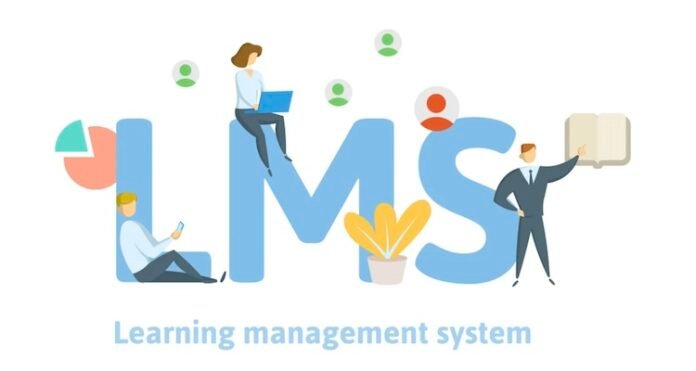The world is online, and so is the education and learning industry. Today, classrooms have gone digital with the revolutionary learning management system (LMS) technology. LMS is a software that helps create and deliver online courses and training programs. The best part, however, is that it can be used in every industry across the globe.
As of 2022, the LMS market has reached $18.7 billion and is expected to reach $43.6 billion by 2027. If you are choosing the best learning management system for your company, you need to carefully look at the available types, options, and features of LMS.
Fortunately, we’ve compiled all that and more in this blog post.
What Does a Learning Management System Aim to Do?
A learning management system aims to ensure easy learning. With its quick availability and convenience, it not only enhances the learning process but also optimizes it. However, as an organization, you need an LMS that can do so much more.
And that’s what modern-day LMS solutions provide. They aim to make your training process far easier and more productive by offering several features:
- Easy course creation, editing, and delivery
- Providing course recommendations based on learner skills and interests
- Making regulatory compliance easy
- Creating courses that cater to all kinds of learners
- Send notifications and alerts
- Making learning fun with gamification
- Tracks and reports learner progress
- Provides comprehensive analytics
What Kinds of LMSs are There?
There are broadly three types of LMSs. Let us discuss and compare each of them.
Cloud-Based LMS vs. Installed LMS Solutions
With companies around the world moving to the cloud, why should your LMS be any different? While installed LMS solutions still exist, they’re less popular due to the expensive requirements (like their own servers and dedicated IT experts to maintain the solution) and time-consuming instalment.
Cloud-based LMSs are easier to use, inexpensive, and require minimal setup from the client side. They also get automatically updated. And the best part is that your employees can access them anywhere, using any device.
Free vs. Commercial Learning Management System Solutions
Free LMS solutions are widely available on the market. They’re perfect for a startup with less budget for training processes. However, they are less likely to cater to a large company with multiple requirements, which is where commercial LMS solutions are helpful.
Open-Source LMS vs. Proprietary LMS
Open-source LMSs are typically developed and maintained by the public. They’re quite similar to free LMSs, as you require some experts to maintain the solution.
Proprietary LMSs are closed-source LMSs that are provided by a specific company, like GyrusAim. They’re installed, maintained, and updated by the proprietor, so you do not have to worry about anything.
What Features Should Learning Management System Have?
Your LMSshould have the following features:
User-Friendly Interface
The best LMS software training platform isn’t only one that boasts the best features; it’s the one that allows users to focus on learning rather than navigating it. It should have a clean and easy-to-use UI. Further, it should be accessible to all, including people with disabilities.
It should allow you to smoothly set up courses, edit them, and monitor your employees’ progress.
Personalized Learning Experience
Personalization is not only the key to effective marketing but also to effective learning. Your LMS should provide role-based and skill-based recommendations for content. For example, if a new employee is using the LMS, they should get courses related to their responsibilities and company policies.
Similarly, it should also provide interest-based recommendations. This way, your employees will know you’re also willing to help them grow as individuals.
Integrations
Customer relationship management, accounting, project management, communication, sales, and marketing—as an organization, you probably use all these software and more for smooth functioning. So you know how simple processes get when they seamlessly work together.
Your LMS should be able to do the same. It should easily integrate with all the relevant and useful software, like your CRM and HR software. This will allow you to enable single sign-on, data synchronization, and an interactive learning experience.
Mobile Accessibility
Learning on the go has become a necessity in this fast-paced world. 64% of learners today want their training programs accessible from their mobile phones. This will allow your employees to manage their training flexibly.
They can access the material from anywhere and at any time. This also ensures your employees remain up-to-date and on the same page, no matter how scattered your workforce is.
Reporting and Analytics
No matter what software you use, reporting and analytics are essential. The best learning management system offers extensive monitoring and analytics features that allow you to identify improvement areas, your learners’ progress, and other metrics. This will enable you to measure the impact of your training.
Assessment
Assessment is essential for measuring the effectiveness of your learning. Different assessments allow you to gauge your employees’ understanding and retention of the training material. Many LMSs provide actionable feedback based on assessment results and personalize learning paths accordingly.
Conclusion
The features mentioned in this list are not the only ones your LMS should have. It should also have other features, such as alerts and notifications, centralized learning materials, compliance tools, scheduling tools, and more.
Remember, the best learning management system is the one that matches all your needs and requirements.
You May Like to Read: Indian Online Learning Industry

